Hawaii is a tropical paradise located in the heart of the Pacific Ocean, in the center of the United States, consisting of islands each with its own unique natural beauty. With its volcanic mountains, white sandy beaches, rich marine life, and impressive cultural heritage, Hawaii attracts travelers from all over the world. Major islands such as Oahu, Maui, Kauai, and Big Island each offer different experiences and countless beauties to explore for both nature lovers and cultural enthusiasts.
Thanks to the diversity offered by the islands, the range of activities in Hawaii is also quite extensive. From active volcanoes to historical monuments, from enchanting beaches to sky observation centers, many places promise visitors unforgettable memories. With a wide variety of places to visit, ranging from surfing to waterfall hikes, snorkeling in coral reefs to discovering local culture, Hawaii is an ideal travel destination not only for nature lovers but also for adventurers, photographers, and anyone looking to relax.
1. Waikiki Beach (Oahu) – Known for its world-famous white sands and surf culture.
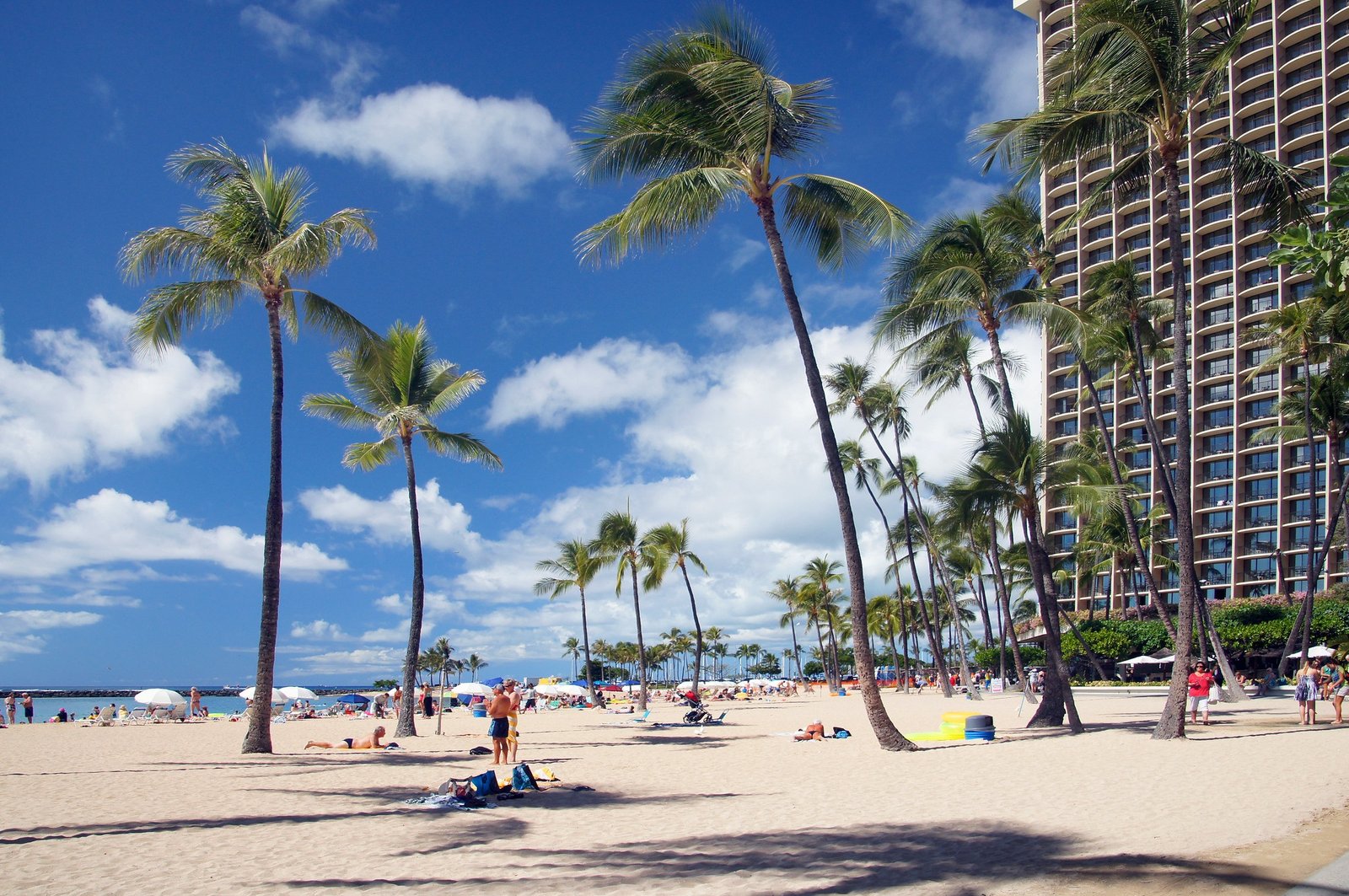
Waikiki Beach is one of Hawaii’s most popular holiday destinations and is located in Honolulu, the capital of Oahu Island. It stands out with its golden fine sand, turquoise calm sea, and sunny weather throughout the year. The luxurious hotels, restaurants, and shopping streets rising right behind the beach make Waikiki an indispensable destination for both locals and tourists. This always lively beach from sunrise to sunset is especially ideal for swimming, sunbathing, and walking along the shore.
Waikiki is also one of the places where surf culture was born and developed. The gentle nature of the waves offers ideal conditions for both beginners and experienced surfers. Taking surf lessons here, longboard surfing, or taking a photo in front of the Duke Kahanamoku statue on the beach are indispensable parts of the Waikiki experience. At night, it is possible to encounter open-air shows and traditional dances accompanied by Hawaiian music while walking along the coast. Waikiki offers a unique atmosphere where natural beauty merges with city life.
2. Haleakalā National Park (Maui) – Watching the sunrise from the volcanic summit is very popular.

Haleakalā National Park is a volcanic national park located on the eastern side of Maui Island and is one of the most impressive natural areas in Hawaii. The most striking feature of the park is the Haleakalā crater, which stands at 3,055 meters in elevation. This massive dormant volcano is known by its name meaning “House of the Sun” and attracts a large number of visitors especially coming to watch the sunrise. Watching the sun rise above the clouds in the early morning creates the feeling of being on another planet and offers an unforgettable view.
Haleakalā is not only known for its sunrise but also for hiking and observation activities. The hiking trails in the park pass through volcanic rock formations, rare vegetation, and scenic viewpoints, offering visitors a unique nature experience. The park is also home to the silversword (Argyroxiphium) plant, which is unique to Maui and protected. At night, due to its remote location away from light pollution, it provides a perfect setting for stargazing. Haleakalā National Park is a fascinating destination with its unique natural beauty both during the day and at night.
3. Na Pali Coast (Kauai) – Famous for its steep cliffs, lush valleys, and coastal hikes.

Na Pali Coast is a unique coastal strip located on the northwestern shore of Kauai Island in Hawaii, showcasing one of the most striking faces of nature. Along this 27-kilometer coast, steep cliffs descending directly into the sea, valleys covered in greenery, and hidden beaches offer postcard-worthy scenery. This area, inaccessible by road, is typically reached via boat tours, helicopter rides, or challenging yet mesmerizing hikes such as the Kalalau Trail. Na Pali is an essential stop for travelers who want to witness Hawaii’s untouched nature and dramatic geography.
Na Pali Coast also holds great importance in terms of Hawaiian culture and history. These valleys were once inhabited by Polynesian natives and still contain remnants of ancient agricultural terraces and traces of traditional life. The region attracts photographers, nature lovers, and adventure-seeking travelers throughout the year. The rocky shores struck by waves, massive cliffs merging with the sky, and the endless ocean view make Na Pali one of the most impressive natural areas not only in Hawaii but in the world.
4. Hanauma Bay Nature Preserve (Oahu) – A great coral reef for snorkeling.

Hanauma Bay Nature Preserve is a protected natural bay located on the southeastern coast of Oahu Island and is known as one of Hawaii’s most popular snorkeling spots. Formed by the merging of an ancient volcanic crater with the ocean over time, this unique formation stands out with its calm waters and rich marine life. Thanks to the colorful corals, tropical fish, and clear waters, visitors enjoy exploring the underwater world with a mask and snorkel. It offers a safe and educational environment, especially for families with children and those with little swimming experience.
Hanauma Bay also stands out for its conservation efforts. The number of daily visitors is limited, and each visitor is required to watch a short educational video about protecting nature before entering. This practice supports the preservation of the reef ecosystem and promotes responsible tourism. The bay, where sea turtles and rare fish species are often seen, is one of the unforgettable stops of a Hawaii vacation with its biodiversity and unique natural beauty.
5. Hilo Waterfalls (Big Island) – Natural wonders like Akaka and Rainbow Falls are located here.
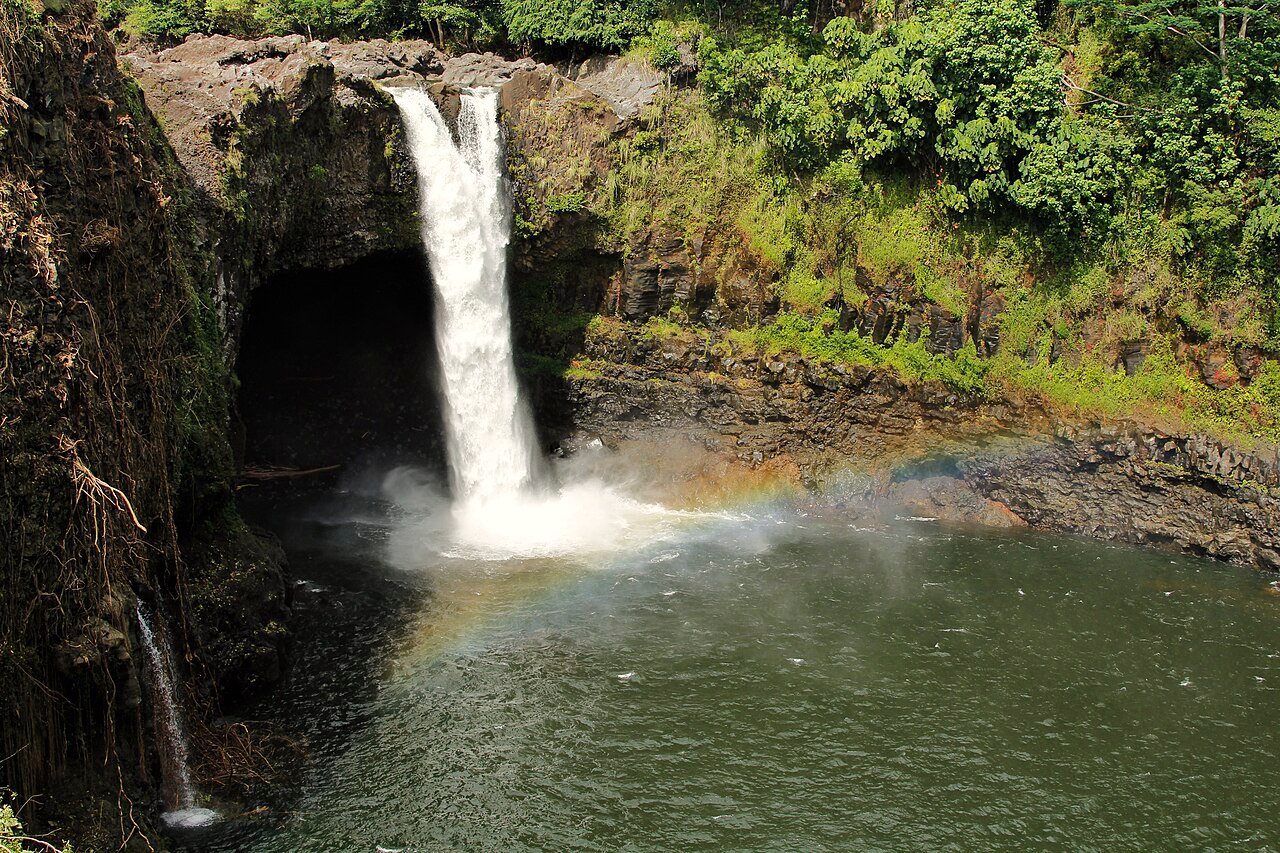
Hilo is a peaceful town located on Hawaii’s largest island, known as the Big Island, and is renowned for its tropical rainforests, botanical gardens, and impressive waterfalls. In this region, especially Akaka Falls and Rainbow Falls are among the island’s most visited natural attractions. Akaka Falls, which plunges from a height of 135 meters, enchants nature lovers with its roaring sound and lush surrounding vegetation. This waterfall, accessible via a short and easy walking trail, takes on a mystical atmosphere especially in the early morning hours.
Rainbow Falls, located just outside of Hilo, gets its name from the rainbow views created when sunlight hits the water vapor. Situated on the Wailuku River, this waterfall is easily accessible due to its close proximity to the city center. Rainbows are quite common at the falls, especially after rainfall when the water flow becomes stronger. Both waterfalls showcase Hilo’s natural richness and are among the enchanting stops that offer tranquility, coolness, and a visual feast for those visiting the region.
6. Pearl Harbor Memorial (Oahu) – A memorial site where one can witness the history of World War II.
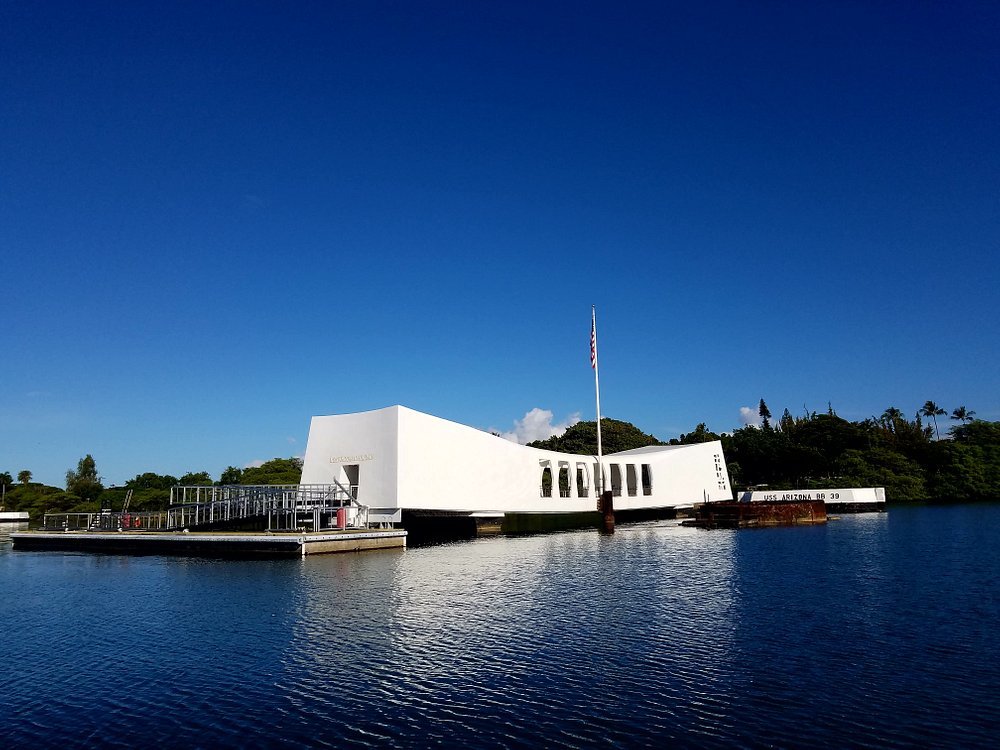
The Pearl Harbor Memorial is a memorial complex located on the island of Oahu and holds great significance for visitors who want to witness the history of World War II. On December 7, 1941, the surprise attack by Japan on the U.S. Navy resulted in tragic events, making Pearl Harbor the center of a turning point that led to America’s formal entry into the war. The USS Arizona Memorial, which bears the traces of this historic attack, is built above the sunken battleship and rises silently in memory of the 1,177 sailors who lost their lives. Visitors can view the visible remains of the wreck beneath the water from the platform above the memorial and directly feel the emotional weight of the event.
Pearl Harbor is home not only to the USS Arizona Memorial but also to many other historical sites such as the USS Missouri Battleship, the Pacific Aviation Museum, and the USS Bowfin Submarine. These sites provide comprehensive information about the naval, aerial, and submarine fronts of the war. Through guided tours and exhibitions, the military and human aspects of the war are conveyed in depth. The Pearl Harbor Memorial is not only a battlefield but also a place of remembrance that emphasizes the importance of peace and the lessons learned from history.
7. Road to Hāna (Maui) – A travel route filled with tropical forests, waterfalls, and panoramic views.

The Road to Hāna is a winding route of approximately 100 kilometers stretching along the eastern coast of Maui Island and is considered one of Hawaii’s most iconic scenic drives. This journey offers much more than an ordinary car ride; it is an enchanting exploration experience filled with narrow curves through tropical forests, cliffside ocean views, waterfalls adorned with rainbows, and hidden beaches. With about 600 curves and more than 50 bridges along the way, visitors are encouraged to stop frequently and enjoy the natural beauty.
Stops along the route include Wailua Falls, the black sand beach in Wai’anapanapa State Park, the Garden of Eden botanical garden, and various fruit stands. At the end of the road lies the town of Hāna, known for its peaceful atmosphere and traditional lifestyle. The Road to Hāna offers a unique journey for nature lovers, photography enthusiasts, and adventure seekers. However, due to the narrow and winding nature of the road, careful driving and plenty of time are recommended. This route reveals the purest and most untouched nature of Maui.
8. Volcanoes National Park (Big Island) – Offers the opportunity to explore active volcanoes and lava flows.

Volcanoes National Park is located on Hawaii’s Big Island and is one of the rare places in the world where active volcanoes can be closely observed. The park is especially known for its two impressive volcanoes, Kīlauea and Mauna Loa. Kīlauea is recognized as one of the world’s most active volcanoes, and its occasional surface lava flows offer visitors the chance to witness live geological processes. With hiking trails and observation points set up throughout the park, these natural phenomena can be safely viewed and the dramatic face of the volcanic terrain can be explored.
Volcanoes National Park is notable not only for its volcanoes but also for lava tubes, steam vents, craters, and landscapes covered with black lava rocks shaped by this dynamic nature. Areas such as the Thurston Lava Tube provide visitors the opportunity to explore underground lava pathways. Additionally, since volcanoes are considered sacred in Hawaiian culture, the park features visitor centers enriched with traditional knowledge and cultural narratives. During the day, the park offers an exploration space for science and nature enthusiasts, while at night it delivers a mesmerizing experience as lava glows meet the sky in spectacular views.
9. Diamond Head Crater (Oahu) – The view of Honolulu after the hike is worth seeing.
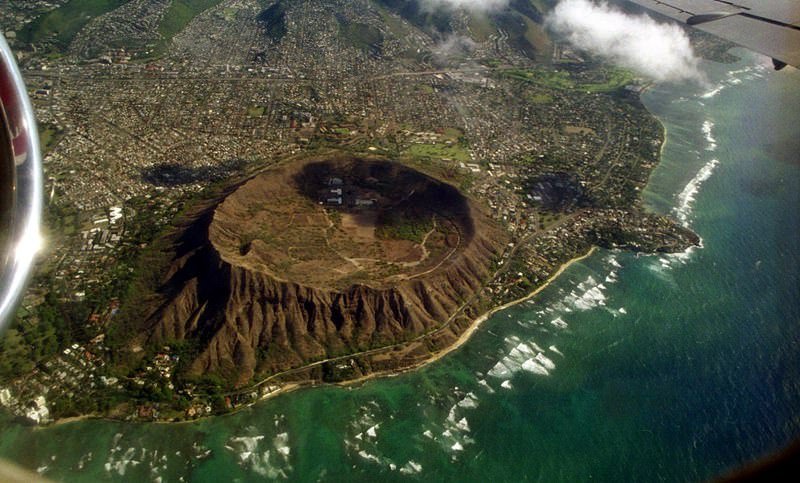
Diamond Head Crater is an extinct volcanic crater located on Oahu Island near Waikiki Beach and is one of Hawaii’s most iconic natural formations. Also known as “Leʻahi,” this crater was formed approximately 300,000 years ago through explosive eruptions and is now notable for both its geological significance and the unique views it offers. A hiking trail of about 1.3 kilometers leads to the summit. Along the way, tunnels, staircases, and panoramic lookout points provide visitors with both a physical challenge and a visual feast.
At the summit, visitors are rewarded with sweeping views of the city of Honolulu, the turquoise Pacific Ocean, and the Waikiki coastline. Especially during sunrise or sunset, the scenery seen from here offers unforgettable frames for photographers and nature lovers. The crater’s history extends back to World War II; old military observation posts and bunkers can still be seen at the top. Diamond Head is one of the essential stops on an Oahu visit, offering both a nature hike and a glimpse into historical heritage.
10. Waimea Canyon (Kauai) – Known as the “Grand Canyon of the Pacific.”
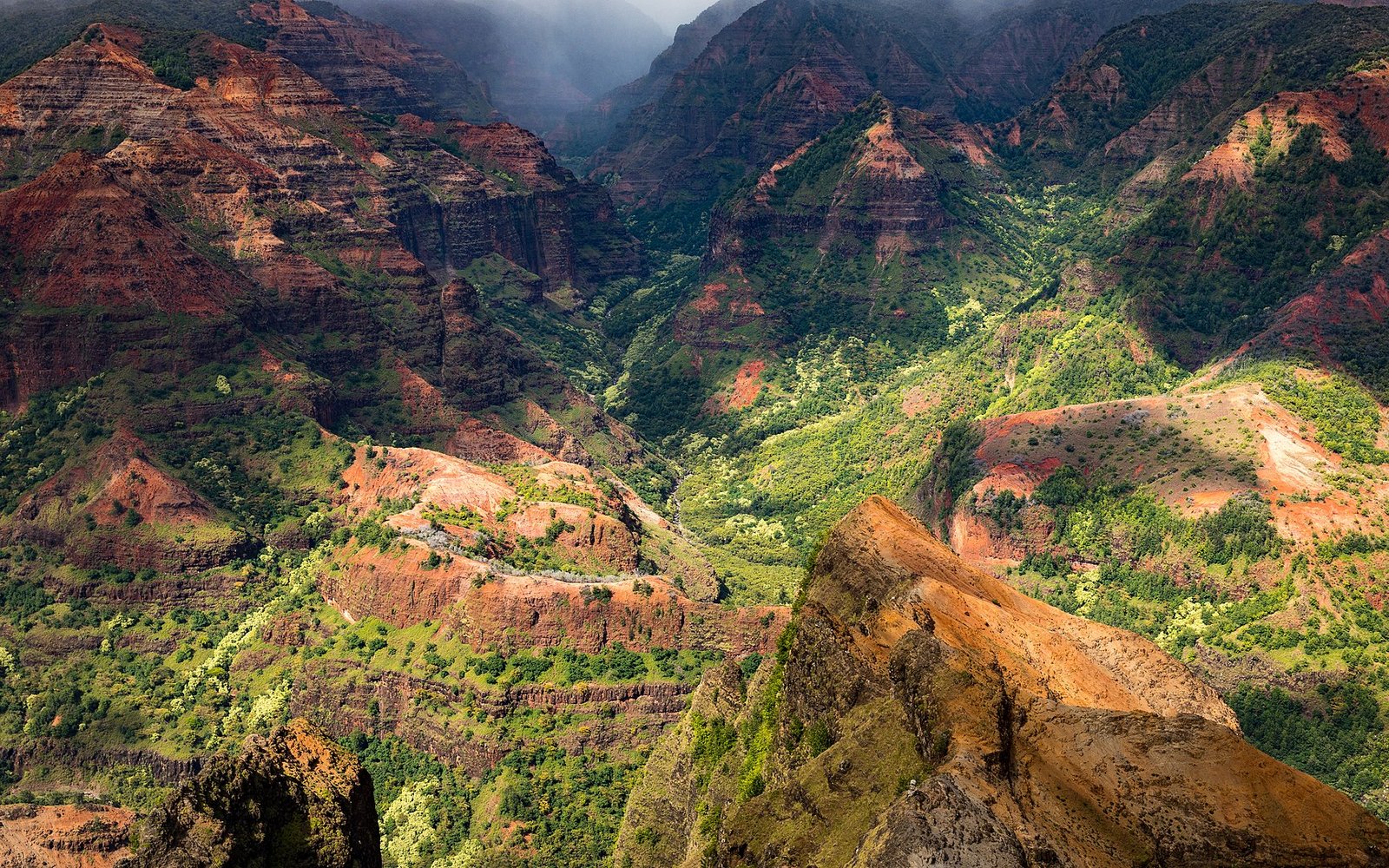
Waimea Canyon is a striking geological formation located on the island of Kauai in Hawaii and is referred to as the “Grand Canyon of the Pacific” due to its stunning natural beauty. Spanning approximately 16 kilometers in length and reaching a depth of 1,000 meters, the canyon offers breathtaking scenery with its reddish rocks, green vegetation, and valleys occasionally shrouded in mist. Formed through a combination of erosion, volcanic activity, and rainfall, Waimea Canyon is one of the rare places in Hawaii where desert and rainforest coexist.
Visitors can observe this natural wonder from various lookout points along the canyon or explore it through hiking trails. The trails within Kokee State Park are suitable for both easy walks and more challenging hikes. Along the way, waterfalls, bird songs, and spectacular valley views accompany hikers. Waimea Canyon is one of Hawaii’s most special spots, not only because of its visual magnificence but also due to its unique geological structure that reflects Kauai’s rich natural history.
11. Lanikai Beach (Oahu) – A peaceful escape with white sand and turquoise sea.
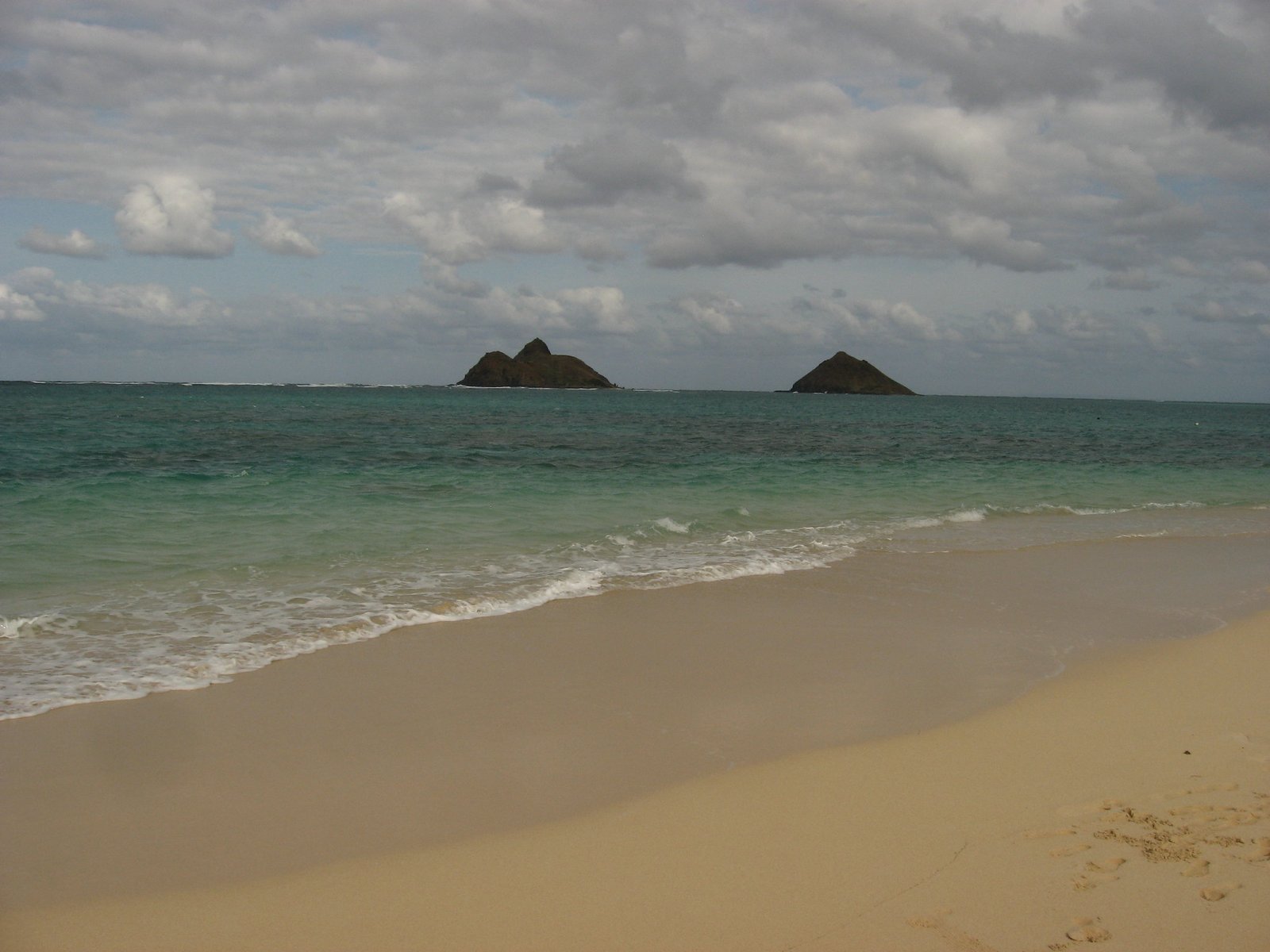
Lanikai Beach is a hidden paradise located on the eastern coast of Oahu Island, just south of the town of Kailua, and is considered one of Hawaii’s most beautiful beaches. True to its name, which means “heavenly sea,” it is an ideal escape for those seeking peace, with its soft white sand and calm, turquoise waters. Its distance from large hotels and crowded resorts makes Lanikai a beach that offers a more local, quiet, and natural experience.
The Mokulua Islands located just offshore enhance the view even more, and it is possible to reach these islands by kayak or paddleboard. The shallow and still waters are perfect for swimming and snorkeling. It offers a calm and peaceful atmosphere for those who want to watch the sunrise in the early morning or spend the day sunbathing and reading. For photography enthusiasts, the Lanikai views captured during golden hour offer unforgettable shots. Lanikai Beach is one of Hawaii’s most special shores with its natural beauty and tranquility.
12. Molokini Crater (Maui) – A crescent-shaped volcanic crater ideal for diving and snorkeling.
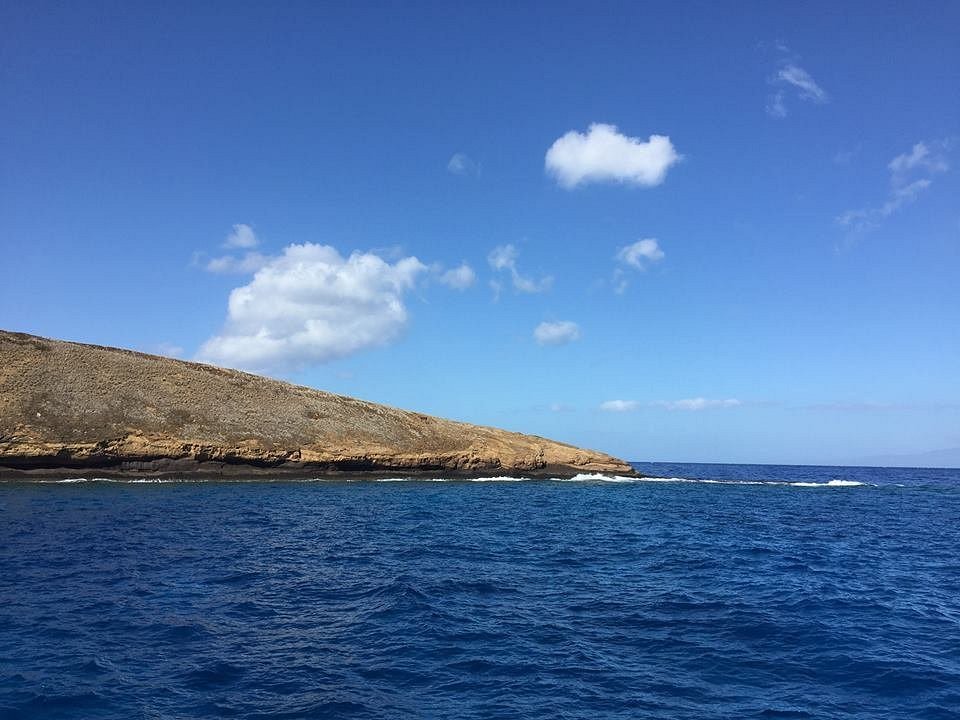
Molokini Crater is a crescent-shaped extinct volcanic crater located in the middle of the sea off the coast of Maui Island and is one of Hawaii’s most popular underwater exploration sites. Only a portion of the crater is visible above the surface, and thanks to its sheltered structure, it has clear and calm waters, free from the effects of waves and currents. This makes Molokini an extremely favorable environment for snorkeling and diving. In this area, where visibility can reach up to 40 meters, colorful coral reefs and more than 250 species of tropical fish can be observed.
Molokini is also highly important in terms of environmental protection. The crater has been declared a marine conservation area to protect marine life, and landing on it is prohibited. Accessible via daily boat tours, diving and snorkeling activities in Molokini are best enjoyed in the morning hours when the waters are clearest. For nature lovers, divers, and travelers wanting to explore underwater life, Molokini Crater offers one of the most impressive and unforgettable experiences in Hawaii.
13. Mauna Kea Observatory (Big Island) – A perfect summit for stargazing.
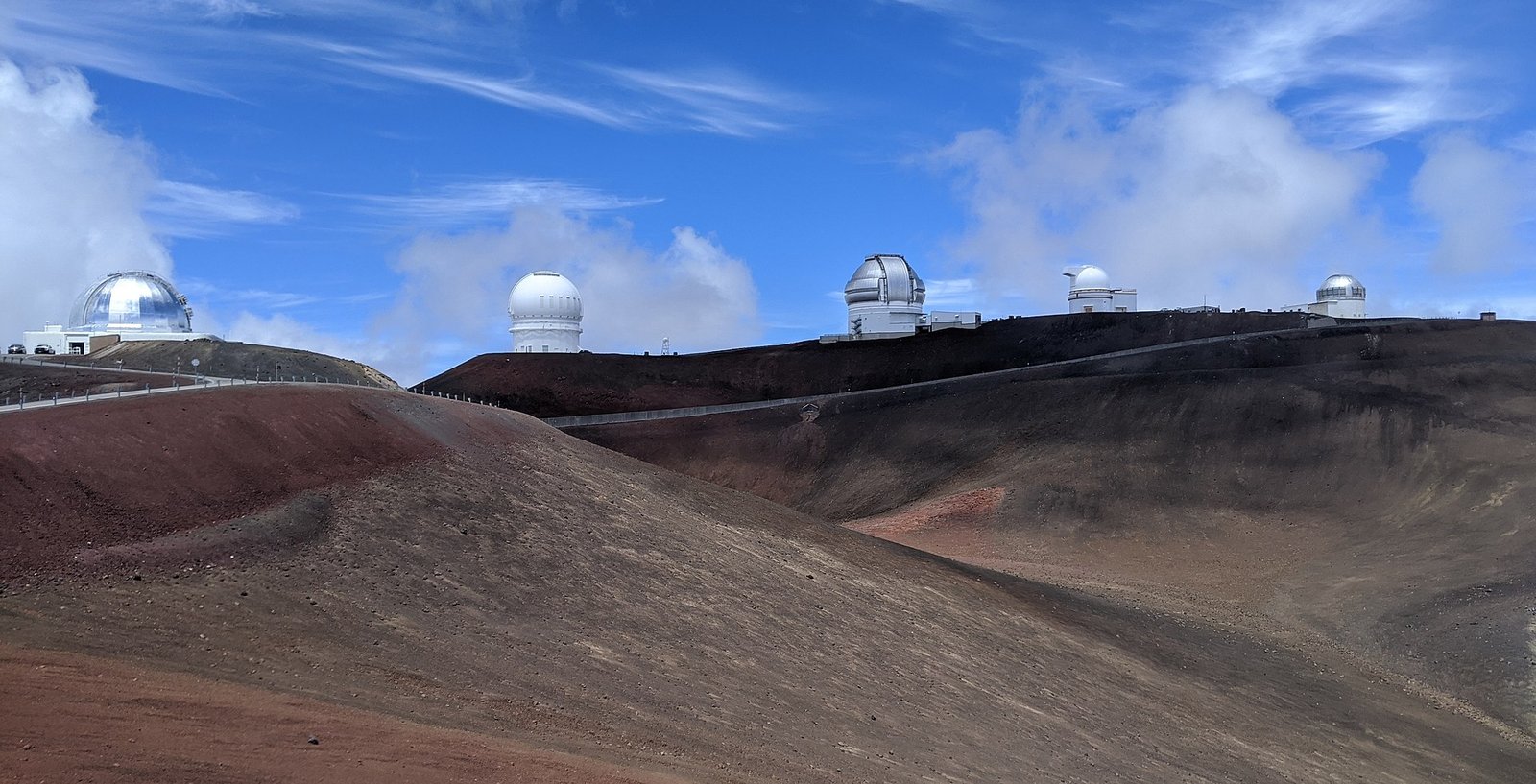
Mauna Kea Observatory is a unique summit located on Hawaii’s Big Island at approximately 4,200 meters above sea level and is considered one of the best astronomy observation points in the world. This ancient and dormant volcano offers exceptional conditions for stargazing thanks to its elevation and low light pollution. At the summit of Mauna Kea, there are multiple international observatories, making it a center where scientists can study the depths of the universe.
For visitors, ascending to the summit and watching the sunset is an impressive experience on its own. In the evening, the star-filled sky offers the chance to see the Milky Way in detail with the naked eye. Guided observation events with telescopes at the visitor center provide unforgettable moments for anyone interested in astronomy. However, due to the high altitude, caution is advised when ascending, and those with health sensitivities should take necessary precautions. Mauna Kea is one of Hawaii’s most fascinating places, both for its scientific significance and mystical atmosphere.
14. Iolani Palace (Oahu) – The only royal palace in the United States.
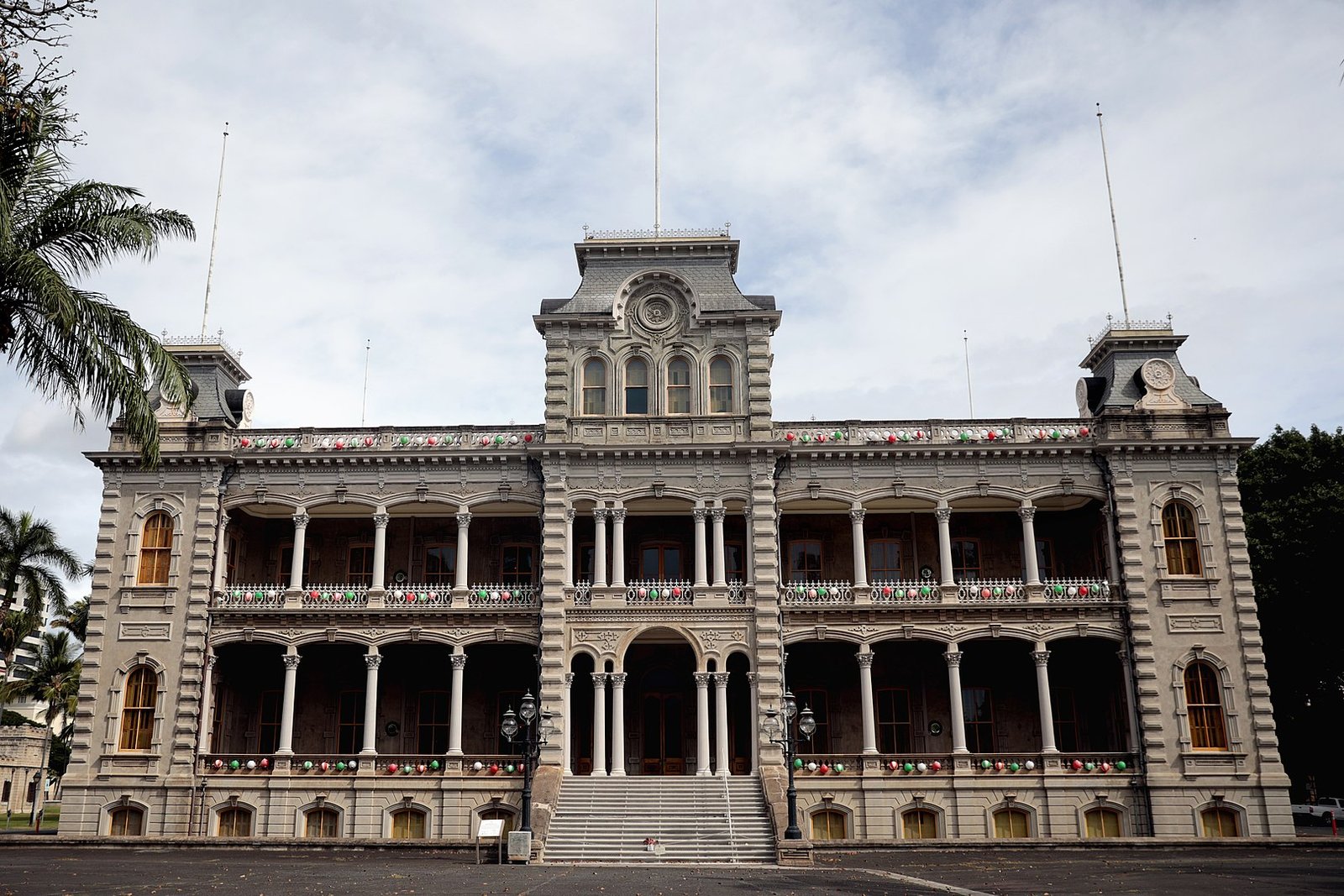
Iolani Palace is a historic building located in Honolulu, the capital of Oahu Island, and holds the distinction of being the only royal palace within the borders of the United States. Built in 1882 by the last monarchs of the Hawaiian Kingdom, the palace served as the political and cultural center of the nation, especially during the reigns of King Kalākaua and Queen Liliʻuokalani. With its neoclassical architecture and elegant details influenced by European styles, Iolani Palace was also technologically advanced for its time; it had electricity and telephone systems even before the White House.
Today, the palace operates as a museum, offering visitors the chance to closely learn about the history of the Hawaiian monarchy. The interior features royal apartments, the throne room, private bedrooms, and historical documents. Through guided tours, the grandeur of the palace, its political history, and the Hawaiian people’s struggle for independence are conveyed in detail. Iolani Palace is not only an architectural marvel but also an important monument symbolizing Hawaii’s cultural identity and historical resistance.
15. Kona Coffee Farms (Big Island) – The birthplace of the world-famous Kona coffee.
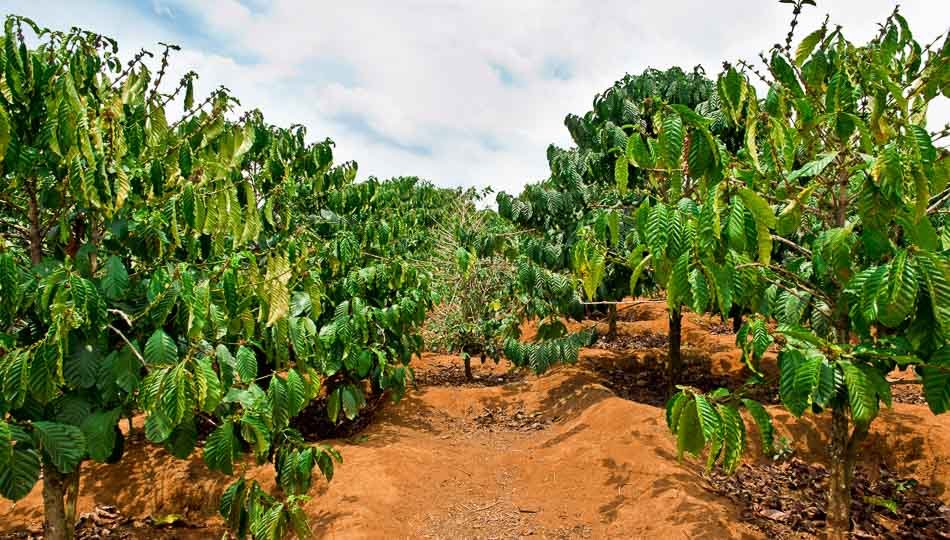
Kona Coffee Farms are located on Hawaii’s Big Island, on the fertile slopes between the Hualālai and Mauna Loa volcanoes, and represent the special region where the world-famous Kona coffee is produced. Natural conditions such as high elevation, volcanic soil, abundant rainfall, and morning sunshine give Kona coffee its unique aroma and smooth taste. This special microclimate allows the coffee beans to mature slowly, resulting in a deeper and more balanced flavor profile. Coffee enthusiasts from around the world visit the Kona region to witness this unique production process firsthand.
Many coffee farms in Kona offer open tours and tasting events for visitors. These tours provide detailed insight into the journey of coffee beans from tree to cup, and it is also possible to taste freshly roasted coffees. On some farms, visitors can meet local farmers and purchase specialty blends from small coffee shops. Kona Coffee Farms are not only the source of a delicious beverage but also an important destination that reflects Hawaii’s agricultural culture and sustainable production practices.
16. Kualoa Ranch (Oahu) – A nature ranch that has hosted many film sets including Jurassic Park.

Kualoa Ranch is a nature ranch located on the eastern coast of Oahu Island, surrounded by stunning green mountains and wide valleys. Spanning over 4,000 acres, this special area is known not only for its agricultural activities but also for being the filming location of world-famous movies and TV shows. Iconic scenes from productions such as Jurassic Park, Godzilla, Lost, and Jumanji were filmed here, making the ranch an open-air film studio for cinema enthusiasts.
Visitors at Kualoa Ranch can take part in a variety of activities such as ATV tours, horseback riding, safari trips, and movie set tours. It also offers opportunities to learn about traditional Hawaiian farming, ancient war bunkers, and sacred sites. With its vast natural landscape, it is an ideal destination for both adventure seekers and those wanting to spend a peaceful day in nature. Kualoa Ranch offers a unique experience that brings together Hawaii’s natural beauty with its cultural and cinematic richness.
17. Polynesian Cultural Center (Oahu) – An interactive center showcasing Polynesian culture.
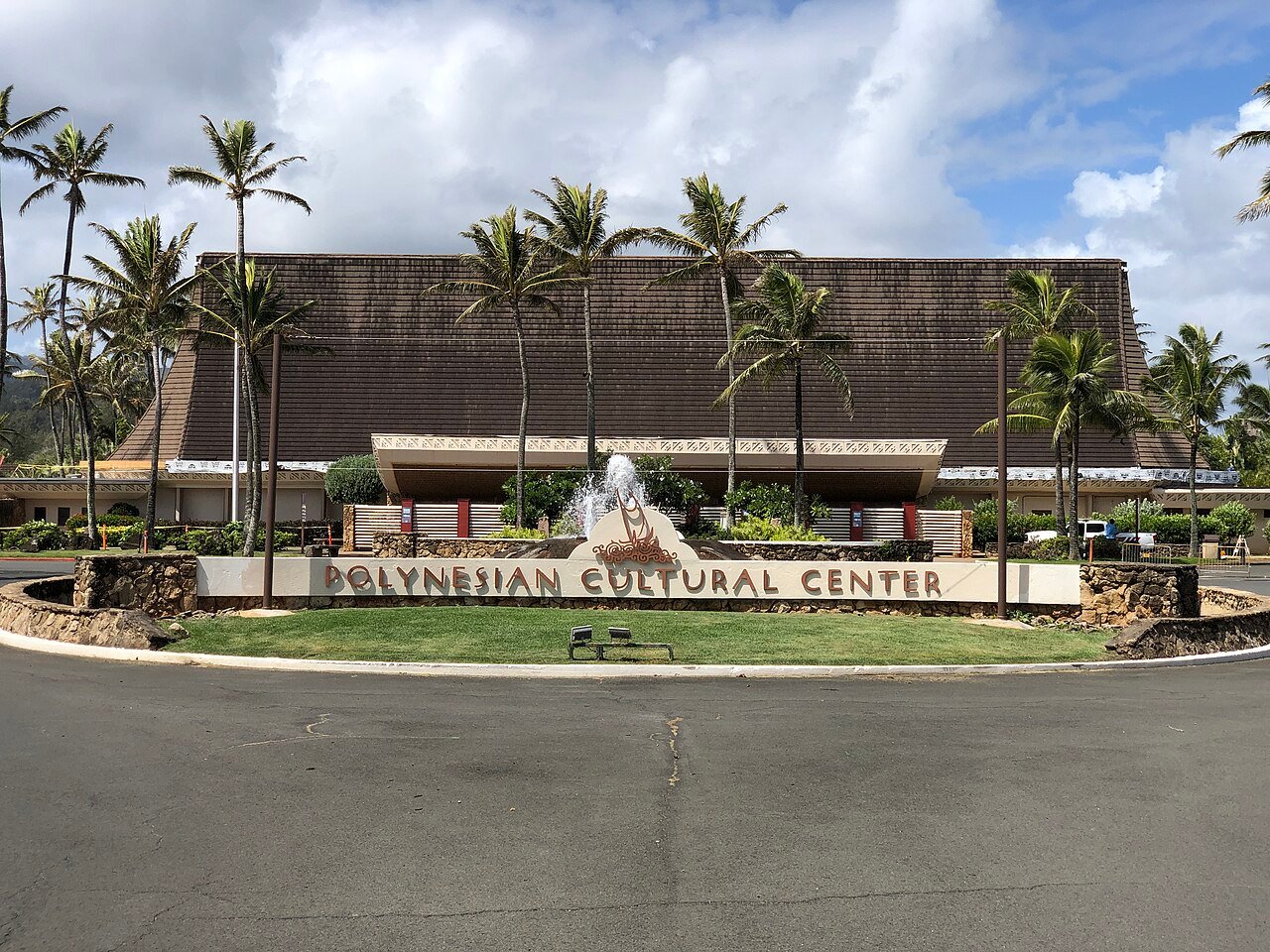
Polynesian Cultural Center is an interactive and educational theme center located on the northern coast of Oahu Island, showcasing the rich cultural heritage of the Pacific Islands. Traditional lifestyles, crafts, dances, and ceremonies of Polynesian islands such as Hawaii, Samoa, Tahiti, Tonga, Fiji, Aotearoa (New Zealand), and the Marquesas are presented to visitors through live performances and hands-on activities. Organized into seven different villages, the center offers a cultural journey by introducing the unique rituals and histories of each culture in a fun and informative way.
Visitors can watch traditional canoe shows, learn how to crack coconuts, participate in spear throwing, or take local dance lessons. At the end of the day, the impressive evening show “Ha: Breath of Life” brings the spirit of Polynesia to the stage with fire dances and dramatic storytelling. The Polynesian Cultural Center is not only a place of entertainment but also a vital institution dedicated to preserving and passing on the cultural heritage of local communities. It offers an educational and unforgettable experience for everyone visiting Hawaii.
18. Makapuʻu Lighthouse Trail (Oahu) – Coastal hiking and whale watching are possible.

Makapuʻu Lighthouse Trail is a popular hiking route located on the eastern tip of Oahu Island, known for its stunning ocean views. The approximately 3-kilometer paved path gradually ascends to the Makapuʻu Lighthouse. This historic lighthouse, built in 1909, is still actively used today. Along the hike, visitors can enjoy views of the Pacific Ocean, the Koko Head crater, and on clear days, even the silhouettes of Molokai and Lanai islands. The trail is suitable for visitors of all ages thanks to its easy accessibility and breathtaking scenery.
Between January and March, this hiking trail becomes one of the best spots for whale watching. Migrating humpback whales surface in the ocean, offering unforgettable sights for visitors. Informative signs placed along the trail provide details about the region’s marine life and natural environment. Offering a windy but refreshing walking experience, the Makapuʻu Lighthouse Trail is an ideal route for nature lovers, photographers, and those seeking a peaceful escape.
19. Waiʻanapanapa State Park (Maui) – Famous for its black sand beach and lava tubes.
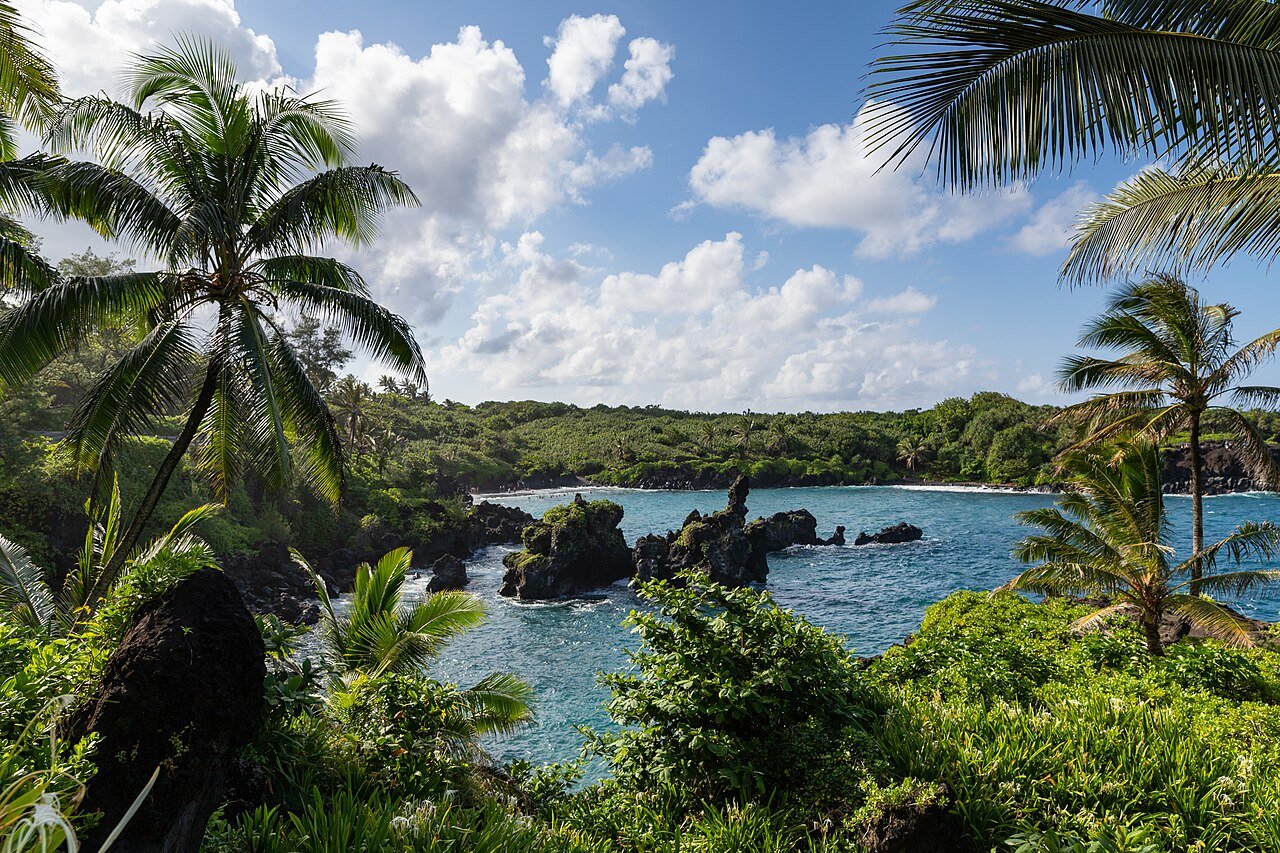
Waiʻanapanapa State Park is a protected area located on the island of Maui, known especially for its striking black sand beach and rich natural beauty. Formed as a result of volcanic activity, this black sand beach creates a stunning contrast with the bright green vegetation and turquoise sea. Since the park is located along the Road to Hāna, it is a frequent stop for those traveling this scenic route. Visitors can swim, hike along the coast, and explore rocky caves and natural formations extending along the shoreline.
The park also features geologically and culturally significant elements such as lava tubes, sea caves, natural arches, and remnants of ancient Hawaiian settlements. The area is considered sacred by Native Hawaiians; caves filled with legends and historic burial grounds can also be found within the park. Waiʻanapanapa offers camping opportunities and provides both a relaxing and adventurous experience for nature lovers and thrill-seekers. For those who want to witness different faces of nature in one place, the park is one of Maui’s most impressive locations.
20. Kalalau Trail (Kauai) – An adventurous hiking route along the Na Pali Coast.
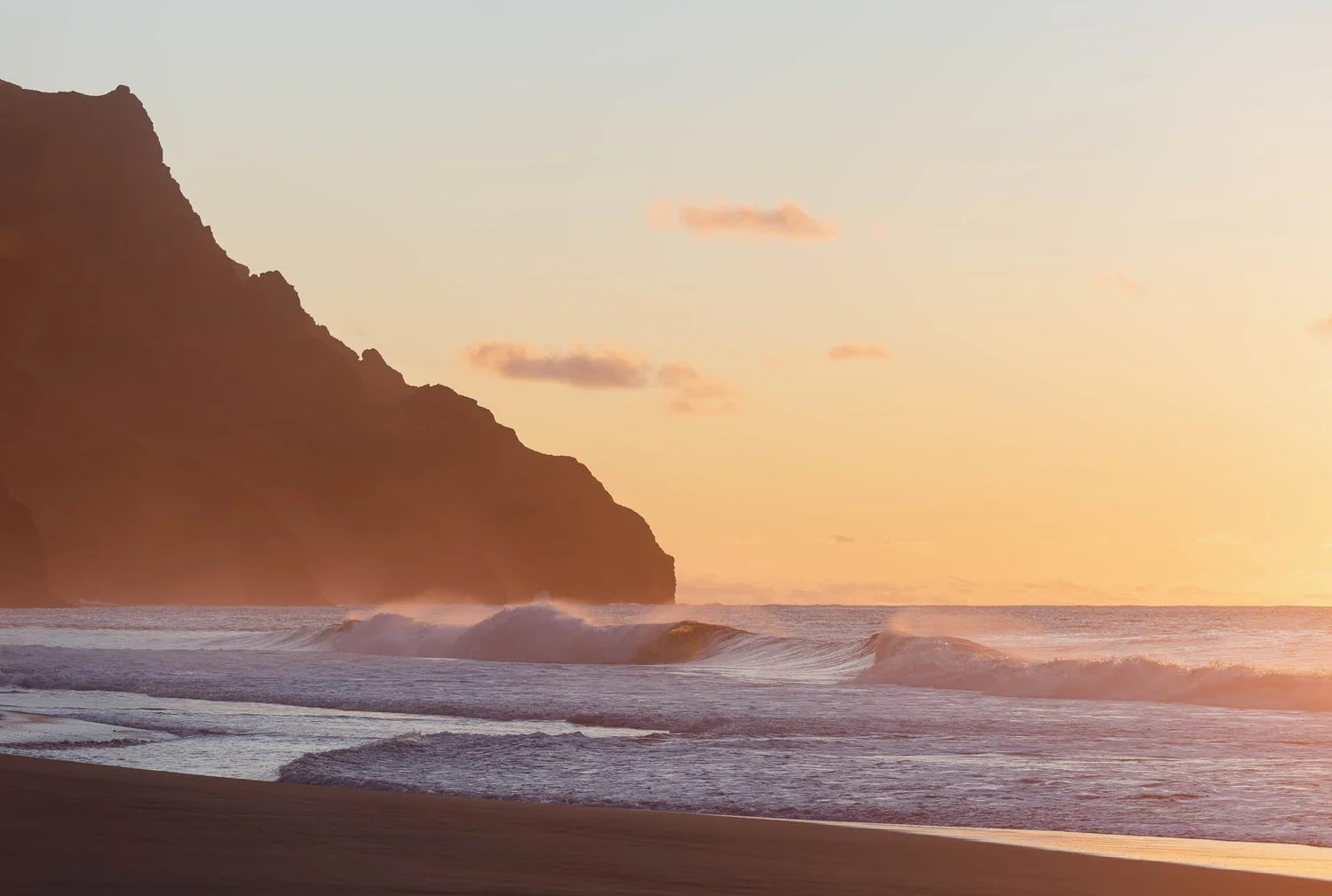
The Kalalau Trail is a challenging yet breathtaking hiking route located on the island of Kauai in Hawaii and is one of the most authentic ways to explore the dramatic Na Pali Coast on the island’s northwest side. This approximately 18-kilometer trail begins at Keʻe Beach and extends to Kalalau Valley, which is accessible only by foot, making it the sole path to reach this remote valley. Along the trail, hikers encounter steep cliffs, narrow passages, dense forests, waterfalls, and panoramic views stretching from the cliffs to the Pacific Ocean.
The Kalalau Trail is ideal for experienced hikers, but due to its difficulty and weather-dependent conditions, it requires good preparation. There are designated camping areas along the route, so completing the full trail typically takes several days and becomes a multi-day adventure. However, for those seeking a shorter hike, the first section leading to Hanakāpīʻai Falls is also quite popular. The Kalalau Trail offers an unforgettable experience for those who wish to be immersed in nature, walk along untouched coastlines, and explore the wild side of Hawaii.
